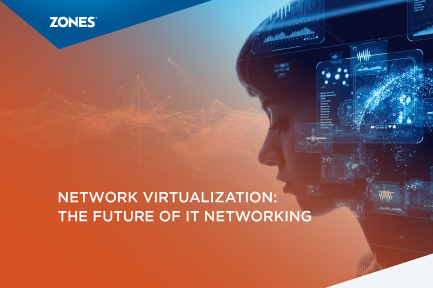Network services automation: A new paradigm in a hyperconnected reality
While the rapid adoption of hybrid work IT solutions including cloud, PaaS, and SaaS has helped businesses solve some of the key challenges of our...

Organizations are continuously seeking innovative solutions to gain a competitive edge. The pressure to compete with larger enterprises and meet evolving customer demands requires a dynamic IT infrastructure. Network virtualization is becoming increasingly pivotal. It empowers organizations to streamline operations, boost agility, and cut costs while ensuring their networks are future-ready.
Network virtualization, often called the backbone of the software-defined network (SDN), creates virtual networks abstracted from physical hardware. It enables organizations to manage and optimize their network resources more efficiently.
Traditionally, enterprises faced the challenge of maintaining complex, physical network infrastructures. These setups often resulted in high costs, limited scalability, and lengthy deployment times. Organizations can achieve greater flexibility, scalability, and agility by decoupling network services from hardware.
Embracing network virtualization presents organizations with a wealth of advantages:
Organizations can optimize their IT budgets by reducing hardware dependency. This results in lower capital expenditure, reduced maintenance costs, and extended hardware lifecycles.
Network virtualization allows organizations to scale their networks up or down quickly, aligning resources with business needs.
Centralized network management becomes a reality with virtualization. IT teams can provision, configure, and monitor network resources from a single console, enhancing operational efficiency.
Network virtualization enables the implementation of advanced security protocols, micro-segmentation, and robust firewall configurations. These help safeguard data and offer better control over network access, bolstering the cybersecurity efforts of organizations.
Network changes and additions can be executed swiftly, reducing downtime and optimizing operational efficiency.
Network virtualization offers diverse applications catering to organizations' specific needs. One of its primary applications is cost-effective scalability. As companies grow, they often face the challenge of expanding their network infrastructure without breaking the bank. Network virtualization allows them to create virtual networks, making resource allocation more efficient and reducing costs associated with physical network expansion.
Another critical application is enhanced security segmentation. Enterprises often deal with sensitive data and need robust security measures. By creating isolated virtual networks within their physical infrastructure, they can effectively segment data, applications, or user groups. This segmentation enhances network security and helps comply with stringent data protection regulations.
While the benefits of network virtualization for enterprises are compelling, the transition may seem daunting. With careful planning and the right partner, implementing network virtualization can be smooth. Here are the essential steps to get started:
Assess your current network infrastructure and identify areas that could benefit from virtualization. Create a roadmap outlining goals and objectives, including network functions needing virtualization.
Choose a trustworthy vendor with a proven track record of delivering network virtualization solutions tailored to enterprises. Collaborate closely with the vendor to ensure the solution meets your business requirements.
Work with your chosen vendor to implement the virtualization solution. This may involve hardware upgrades, software installations, and staff training. Ensure that the transition is gradual to minimize disruptions.
Thoroughly test the virtualized network to identify any issues or bottlenecks. Fine-tune the system for optimal performance and security. This phase is crucial to ensure a seamless transition.
Establish a robust monitoring and maintenance routine once your virtualized network is up and running. Regularly update and patch the system to protect against vulnerabilities and ensure peak performance.
Network virtualization will continue to play a pivotal role in the success of businesses. As software-defined networking (SDN) and network function virtualization (NFV) technologies continue to advance, organizations can anticipate increasingly streamlined and efficient network management in the coming years. By strategically implementing network virtualization, organizations can not only survive but thrive in today's evolving business landscape.
At Zones, we understand organizations' unique challenges and opportunities. Our networking services are designed to empower organizations with the benefits of network virtualization. Whether you want to enhance security, boost agility, or reduce costs, Zones has the expertise and experience to help you achieve your goals.
Contact us today to embark on your journey toward a more efficient, scalable, and competitive network infrastructure.
-Feb-08-2023-12-35-37-2013-AM.png)
While the rapid adoption of hybrid work IT solutions including cloud, PaaS, and SaaS has helped businesses solve some of the key challenges of our...
1 min read
Software Defined Networking Like server virtualization before it, software-defined-networking (SDN) is gaining tremendous traction in the data...
.jpg)
Introduction: The Evolution of IT Networking In IT networking, efficiency stands as a cornerstone for organizational success. With the complexity of...